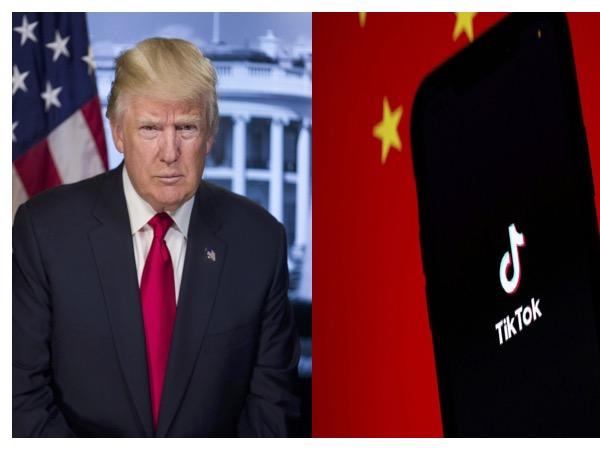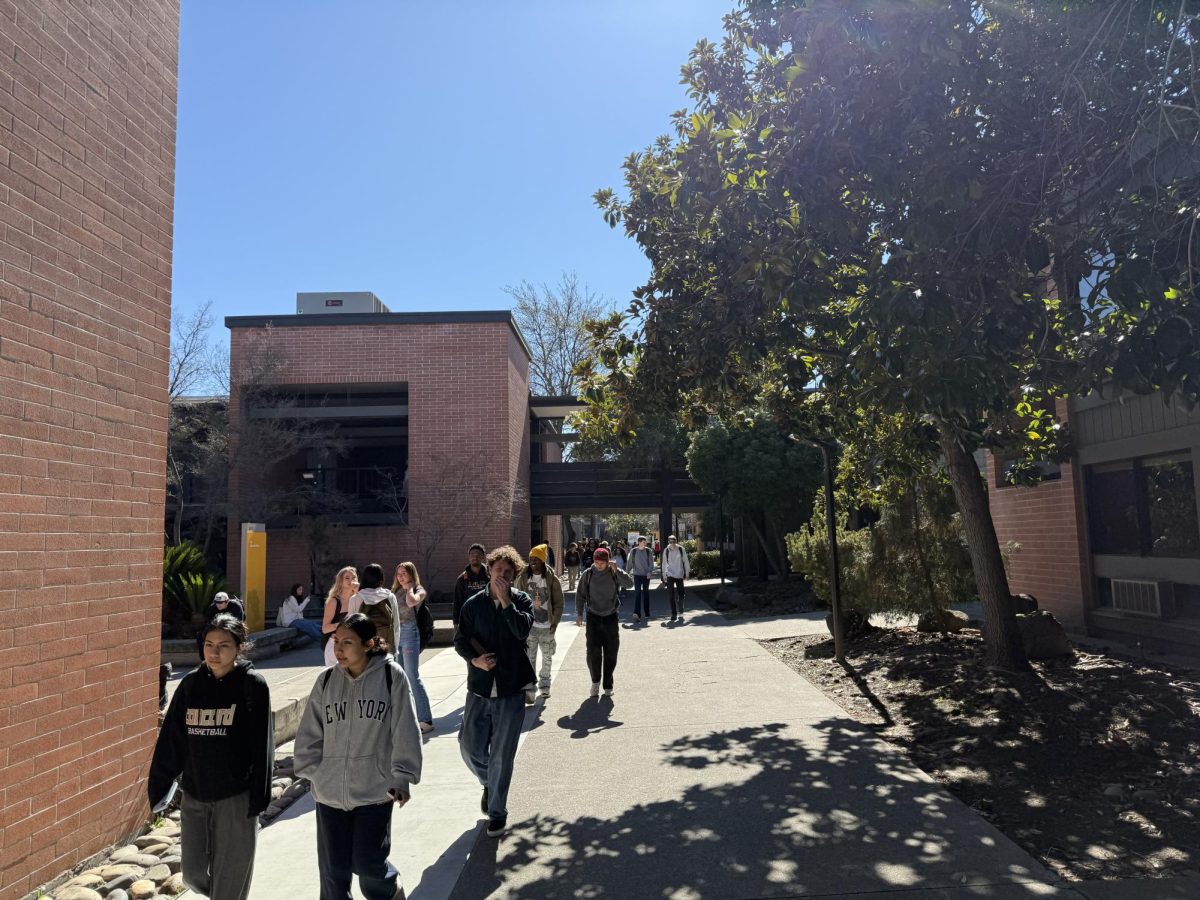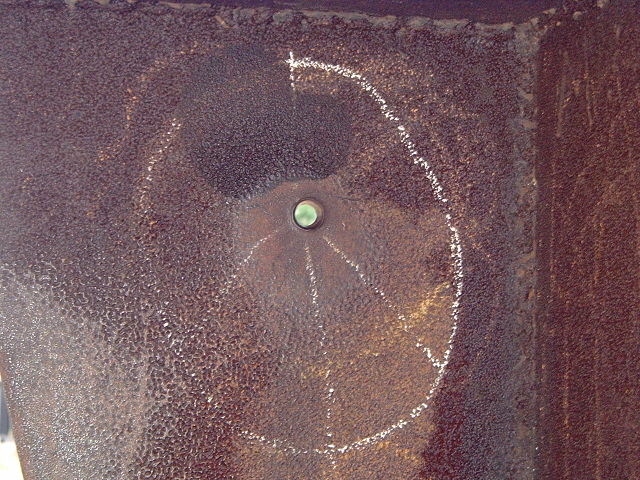50 Years After the Killings at Kent State, What has America Learned?
Bullet hole in a sculpture by Don Drumm| caused by a .30-06 round fired by the Ohio National Guard at Kent State on May 4, 1970. (Photo by M. Stewart)
May 1, 2020
Fifty years ago, on a low-profile, Midwestern college campus, an event occurred that was among the most unforgettable of my life, and of my generation. Fifty years later, it still is.
By way of background: my older brother Bill volunteered to fight in the Vietnam War, entered the Platoon Leaders Corp at a Cincinnati college and after graduating, joined the Marine Corps as a second lieutenant. Once he was stationed in the jungles, villages, farms and paddies of ‘Nam, we scurried around daily to read delayed, often conflicting news accounts of battles and ambushes to find out where he was and whether he was safe. This was way before “real time” internet and social media, so good luck trusting the veracity and accuracy of those often-censored reports. All I knew is that I wanted Bill back safely in his New York home: the goofy, sports-loving, weight-lifting character I grew up with. We had our whole lives ahead of us – wives and kids and jobs and soccer and families to grow as the next generation – and hoped to leave the geo-political madness and “dogs of war” to some other self-righteous, finger-pointing “leaders.”
But on the afternoon of May 4, 1970, on the grounds of Kent State University in Ohio, angered and exhausted anti-war demonstrators faced off against exhausted, angered National Guardsmen. The result: four university students were killed and nine others were wounded and maimed. A brief synopsis of the event can be found at here (http://www.ohiohistorycentral.org/w/Kent_State_Shootings). The photographs, video and writings of the event – with sounds of shots, taunts and student screams, and also politicians’ bizarre spin on the events – radiated far beyond the country’s heartland.
That day, my roommate and I were studying in our dorm at a Jesuit university. We turned to look over our shoulders as a popular student seemed to sleepwalk past us in the hallway, ashen-faced, murmuring to room after room what his girlfriend in Ohio has just phoned about: several students had been seriously shot and fell bleeding after an anti-war demonstration. An ROTC building had been torched on campus the night before, and they’d been shot by our own National Guard troops. “Wait…” my roommate asked, “American students? By our own National Guard? Where the hell was this?” The answer was clear: “Yeah. American college students. Ohio. Some place called Kent State.”
The dorm hallway emptied out, and eventually we filled up our friend Mackey’s room on the first floor – he with the biggest TV and sofa – to see and hear and discuss the horror of the events. In the media, “the establishment” offered up the warmed-over language of scapegoating and shaming students – and occasionally their instructors – as they focused with typical, predictable attention on the supposedly “outside agitators” who were everywhere to blame. Our room of students that day would have none of it. The cross-hairs had been adjusted: America’s leadership was now permitting the killing of its own youth. That meant each of us.
I doubt that many of my own students today at Diablo Valley College can picture the events that followed, even with today’s college and workplace shut-downs. In the wake of the killings, hundreds of college campuses exploded in anger, shock, fear, protest marches and powerful, sometimes destructive demonstrations. Several hundred schools were shut down across the country, including my own in New York. Students often lurched back into the community, asking to speak at high schools, churches, synagogues and community centers about the anger and betrayal they felt around the draft – men only, please – and what they considered a wasteful and immoral war. I joined them at my old high school in an effort to alert the next generation about their upcoming choices with college, the draft, the war.
More than 58,000 Americans were killed and countless others injured, both physically and psychologically, in Vietnam. Who would ever tally the hurt to families, friends, institutions and the country at large? President Nixon’s secret bombing of Cambodia would reach historic proportions: Cambodia lost 100,000 citizens and two million became homeless (talk about a refugee crisis). Nearby Laos became the most-bombed nation in history per capita; some American bombs still lie dangerously un-exploded there today.
Five years after the Kent State shootings, after losing the Vietnam War, America pulled out amidst chaos and proclaimed at festooned podiums that we had made “peace with honor.” Ironically, the history books would inform us that the re-united nation-state of Vietnam had lost some 1 million citizens. And that nation today refers to the terrible decade of conflict as “the American War.”
The pop song “Ohio” became a national anthem remembering the carnage of May 4, 1970. Years later, when a national memorial for healing and remembrance was chosen among competing artists – what became the Vietnam Memorial in Washington, DC – the conflicting sides of our nation’s politics and values played out again. In so many ways, they still continue to play out today.
Maybe our students in 2020 know this. Maybe not. Maybe we should discuss this legacy with them honestly, seriously and from many perspectives. Maybe we shouldn’t yawn and pass it over in the hopes that future generations act more wisely than past ones.
Rob Peters is a part-time Counselor at DVC.









































































